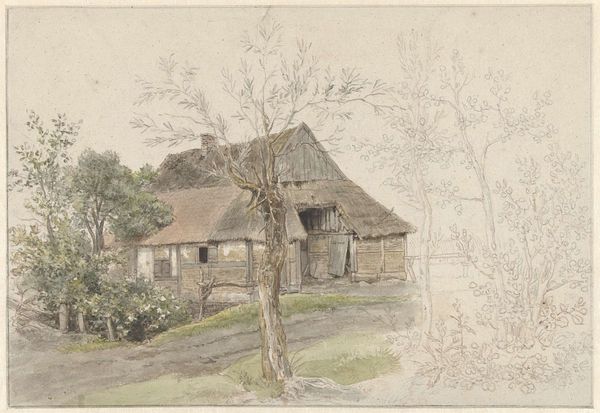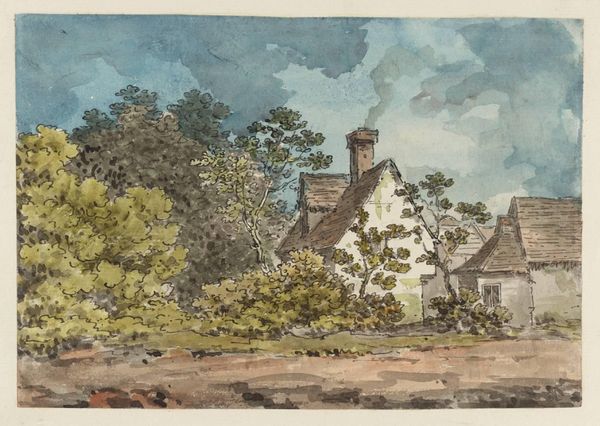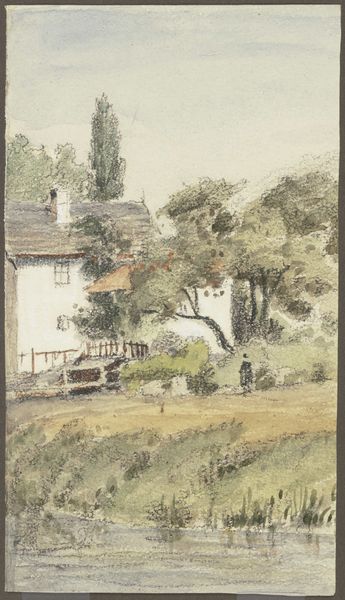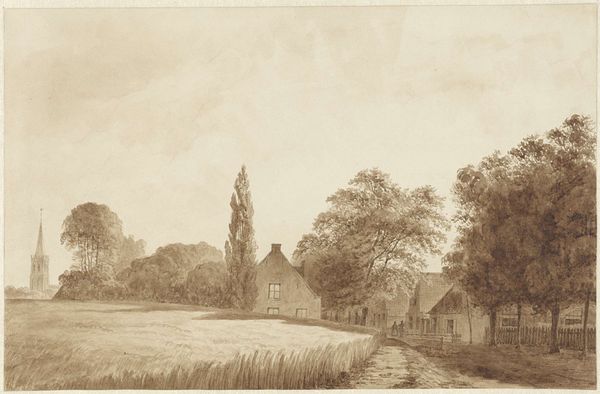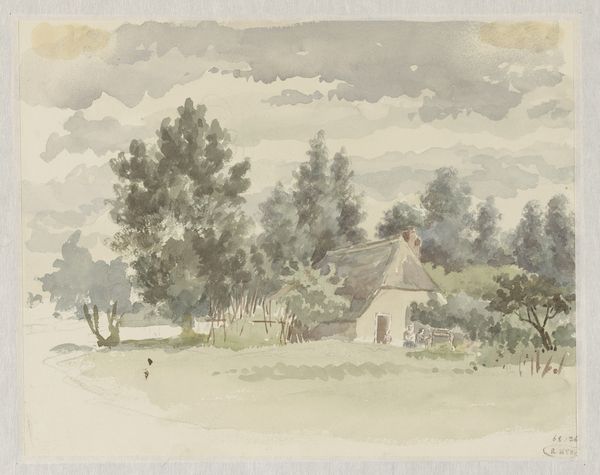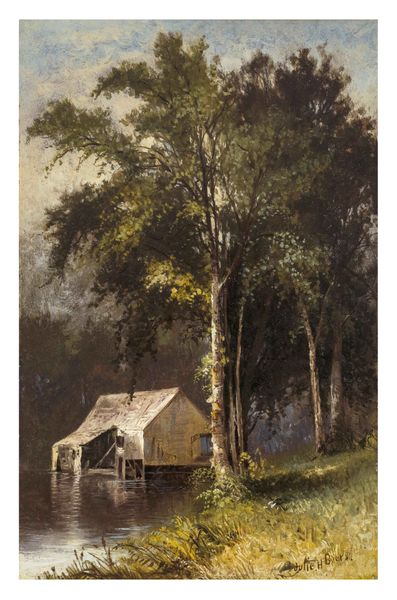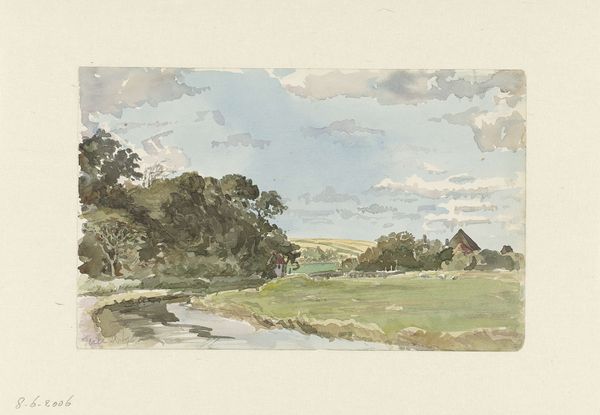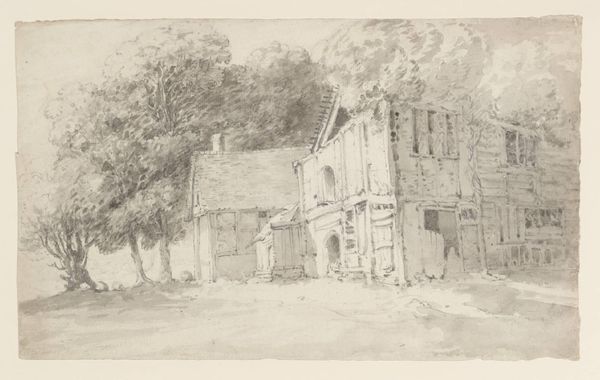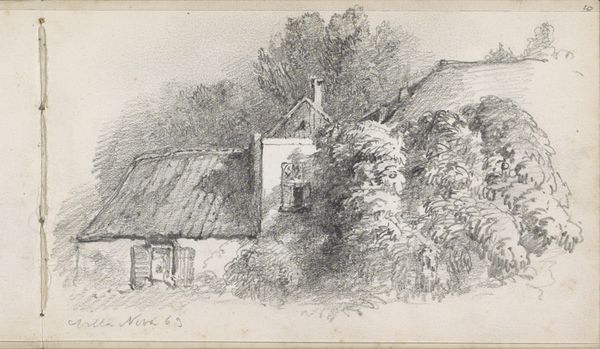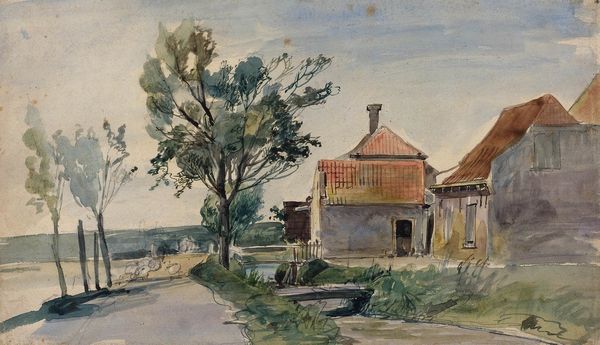
Dimensions: support: 131 x 166 mm
Copyright: CC-BY-NC-ND 4.0 DEED, Photo: Tate
Curator: Here we have Henry Edridge's watercolor, "Farm Buildings." While undated, Edridge lived from 1769 to 1821, and his style places this work firmly in the late 18th or early 19th century. Editor: It feels so dreamlike, doesn't it? The soft washes of color give it a very tranquil, almost nostalgic quality. Curator: Certainly. Edridge was working within a tradition of picturesque landscape painting, responding to the social and aesthetic values of the time by idealizing rural life. Editor: Yes, that is so. You can see how the buildings themselves become almost symbols of a simpler existence, weathered by time, yet somehow timeless. Curator: And the lack of figures suggests the insignificance of humanity compared to the enduring power of nature, a common trope in Romantic art. Editor: Looking closely, the reflections in the water seem to echo the buildings, creating a sense of doubling, almost as if the past is layered upon the present. Curator: Indeed. It invites a quiet contemplation of the changing English countryside and the values attached to it during a period of immense social change. Editor: It's a potent reminder that even seemingly simple images can carry such profound cultural weight.
Comments
Join the conversation
Join millions of artists and users on Artera today and experience the ultimate creative platform.
tate 8 months ago
⋮
It was as a portrait draughtsman that Henry Edridge earned both his contemporary reputation and his living. His watercolour landscapes are less well known and relatively rare. They seem mostly to date from the early years of the nineteenth century when he was to be found sketching in the vicinity of Fetcham in Surrey and especially at Bushey in Hertfordshire. These were the two country retreats of the physician, collector and amateur draughtsman Thomas Monro who in the 1790s established an informal 'academy' for landscape artists at his London house in the Strand. Edridge's watercolours tend to show cottages, farms and country lanes, and are generally executed in a palette of russets, browns and yellow-greens. Gallery label, September 2004
